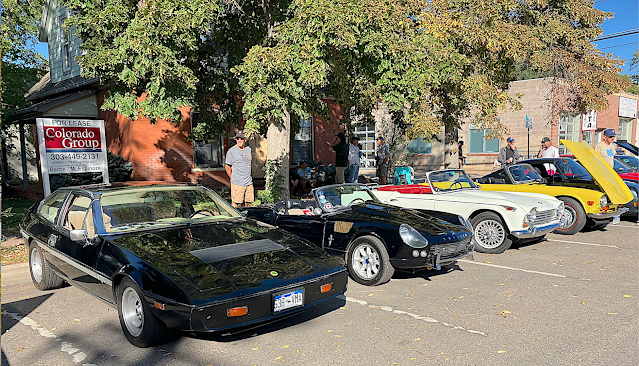In the mid-Seventies, the Museum of Modern Art commissioned Giorgetto Giugiaro of Ital Design to design a prototype for a modern taxi. MOMA's home city was by then known for its clogged streets and familiar yellow Checker cabs. Not surprisingly, Giugiaro came up with something completely different. With the cooperation of Alfa Romeo, he created a 5-passenger taxi in 1976 that measured 158" long, a whopping 46" shorter than the familiar Checker. Power came from a fuel-efficient 1.3 liter boxer 4 cylinder driving the front wheels, with independent suspension front and rear. The Alfa shield grille shape is subtly (maybe too subtly) worked into the 5-mph bumper at the front.
Innovative features included wide, sliding passenger doors on both flanks, flat floors, and wheelchair storage space under the seats. Giugiaro's MOMA taxi offered striking space and fuel efficiency advantages over other cabs, especially the Checker. Sadly, it didn't attract enough interest from potential customers to put it into production...
Not discouraged by non-adoption of his Alfa-Romeo MOMA cab, Giugiaro proposed the Lancia Megagamma van above in 1978. Front wheels were again powered by a boxer four, but this time by the 2.5 liter SOHC Gamma unit. Driver's cabin and luggage space were more ample than in the MOMA taxi, as the Megagamma van was just under a foot longer at 169.7". Fuel tank and spare tire were located below the flat floor. Drag coefficient was surprisingly low for such a cubic form, at 0.34. Fiat managment showed a lack of vision by deciding not to produce this van. Six years later, Chrysler engineers would confirm the soundness of Giugiaro's concept, when their own front-drive minivans helped revive their company's fortunes.
This wasn't the first time that Giugiaro had been involved in a taxi project. Eight years before the MOMA project, he had begun a complete restyling of the Checker cab for Alejandro De Tomaso after the sports car builder had purchased Ghia. The Checker project was continued under Tom Tjaarda after Giugiaro left Ghia to start Ital Design. The resulting '68 Ghia Centurion as completed by Tjaarda, above, shared the clean flanks and glassy greenhouse of Giugiaro's previous 4-door project, the Iso S4 below, but none of the iso's sleek proportions. The tall roof and too-vertical angles of the Centurion's windshield and backlight made for plenty of space, and also concealed the car's great length, as it was on the 129" wheelbase option offered by Checker. Though the Centurion was more modern-looking than Checker's standard design, the company apparently decided it didn't offer enough advantages to put into production.
That standard Checker design had been largely unchanged from the A8 model below, which went into production in January 1956.
A8 advantages over the previous A6 model shown rushing down a film noir street below included 30% more interior space and easily removable fenders, an important feature in an environment conducive to fender benders...
Despite the proposals from Ghia for a more modern-looking Checker cab, and from MOMA and Giugiaro for a taxicab revolution, Checker's basic design from the A8 stayed in production until 1982, receiving quad headlights in 1958, with Chevrolet inline sixes and small-block V8s supplanting the Continental L-head six in 1965. It was such a familiar shape on American city streets that it was likely what you thought of when you thought "taxi."
It was a blocky and unrefined shape, but it was a friendly one, especially when one answered your hand signal for transport on a freezing New Year's Eve in New York. In fact, it was such a friendly-looking car that this example has taken advantage of that blockiness and been modeled in Lego components at Legoland New York, delighting children of all ages...
Photo Credits:
Top thru 3rd from top: wikimedia.com
4th: allcarindex.com
5th: Iso Rivolta, featured on story-cars.com
6th: Checker Car Club, on checkerworld.org
7th: imcdb.org
8th & bottom: Dr. Marcus Nashelsky



































